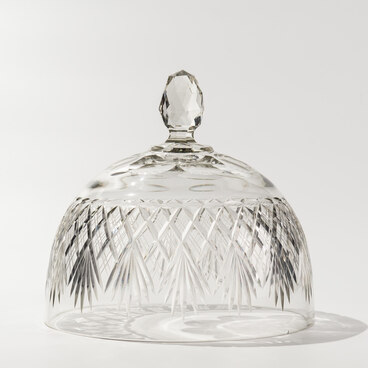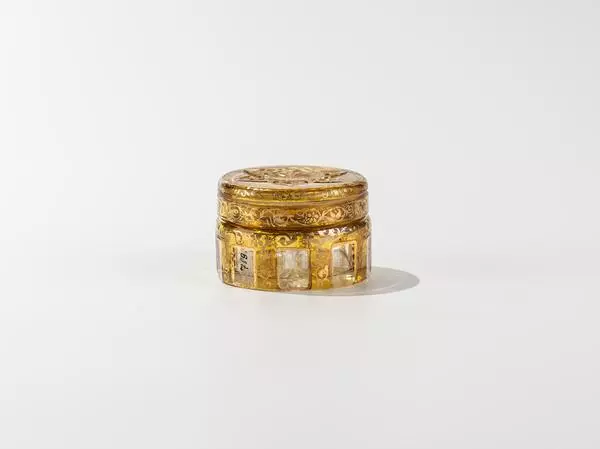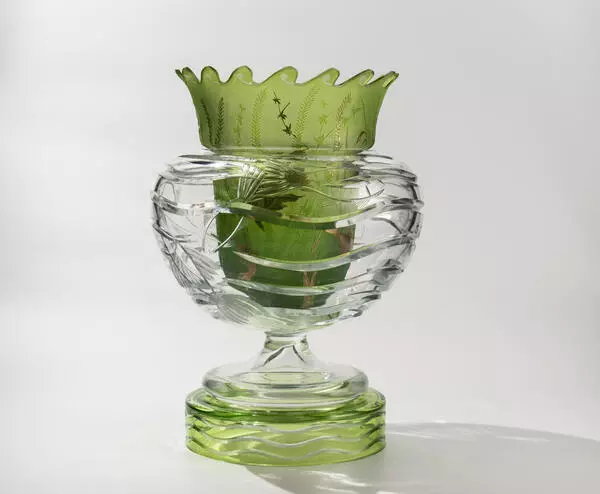This product belongs to a category of plates with a diameter of over 30 cm. The Russian term for a plate — a “tarelka”, earlier a “tarel” — originated from the German word “talier” which can be traced to the Latin “taliāre”, meaning “to cut”. Most plates are round, and some are oval and elongated. A plate is one of the oldest types of vessels used by humans. Initially, one large, shared plate was placed on the table where everyone could eat from. The first plates were wooden, and later ceramic and metal plates appeared. In Russia, a flat plate was also called a “ploshka”, meaning an object with a flat bottom. Individual plates became a part of the everyday life of wealthier people in the 17th century and became widespread a century later. Alongside functional plates, other types appeared to be used as decoration, awards, and souvenirs. A decorative plate is a piece of interior design. With their high artistic merits, many decorative plates can be rightly considered artworks.
This plate was designed by the artist Anna Lipskaya (1902–1981) at the Dyatkovo Crystal Factory. It was made of two layers of glass — colorless and dark red. The red color of the glass mass was achieved due to the presence of copper in the form of colloids. Such glass is known as the “copper ruby”. In its pure form, the copper ruby color is very dark and may even seem black, which is why it is used for producing overlay glass.
On the back side, the plate is covered with an image depicting a bouquet and a flower garland. Diamond-shaped cuts are additionally decorated with liquid gold and annealed. Applying gold to the cuts allows to prevent it from wearing off. When seen through the top surface of the plate, this decoration creates an illusion that three-dimensional flowers are frozen in the glass mass. The plate’s edge was carefully ground after cooling down, or “tucked in” according to the terminology of glassmakers. The design of the plate is typical of the 1950s when the most popular products had an elaborate and festive look.
This plate was designed by the artist Anna Lipskaya (1902–1981) at the Dyatkovo Crystal Factory. It was made of two layers of glass — colorless and dark red. The red color of the glass mass was achieved due to the presence of copper in the form of colloids. Such glass is known as the “copper ruby”. In its pure form, the copper ruby color is very dark and may even seem black, which is why it is used for producing overlay glass.
On the back side, the plate is covered with an image depicting a bouquet and a flower garland. Diamond-shaped cuts are additionally decorated with liquid gold and annealed. Applying gold to the cuts allows to prevent it from wearing off. When seen through the top surface of the plate, this decoration creates an illusion that three-dimensional flowers are frozen in the glass mass. The plate’s edge was carefully ground after cooling down, or “tucked in” according to the terminology of glassmakers. The design of the plate is typical of the 1950s when the most popular products had an elaborate and festive look.




